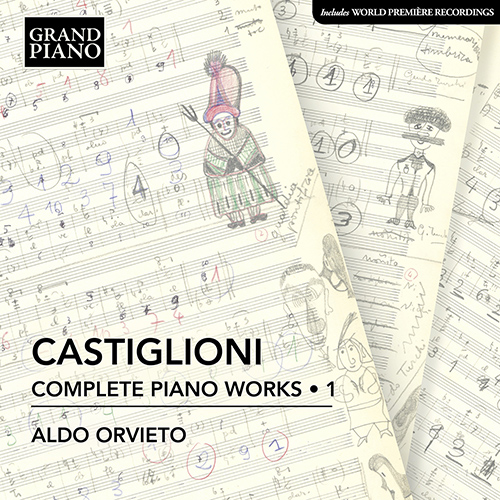
About this Release
“Niccolò Castiglioni was one of the most distinctive and original composers of the second half of the twentieth century who stood apart from his fellow-countrymen. Simplicity, conciseness, an inexhaustible melodic vein, skillful rhythmic variety, a subtle balance between playfulness, lyricism and mystical ecstasy, as well as an extraordinary inventiveness, are recurring characteristics of his unique musical language. A considerable body of pieces written between 1952 and 1954 documents the beginnings of his journey as a composer. From a form of Ravelian neo-classicism to dodecaphony, his musical style may be described as ‘the synthesis of seemingly disparate modes of writing… sprung from a fundamentally musical rather than theoretical instinct’. Castiglioni’s works also include purely tonal pieces of exquisite craftmanship.” — Aldo Orvieto
CASTIGLIONI, NICCOLÒ (1932–1996)
Complete Piano Works • 1
- Aldo Orvieto, piano
Niccolò Castiglioni was one of the most singular figures on the Italian music scene of the latter half of the 20th century. Including world première recordings, Volume 1 of this complete edition reveals the exceptional quality of Castiglioni’s early piano works, the cantabile solemnity found in his exploration of twelve-tone techniques, and the quest for simplicity in later pieces that include the Seconda sonatina discovered among the composer’s papers after his death. The acclaimed pianist Aldo Orvieto has recorded and performed extensively throughout his career and is a specialist in Italian 20th-century repertoire.
Tracklist
|
Piano Sonatina in G Major (1952) (00:10:00 )
|
|
1
I. Allegretto (00:03:27)
|
|
2
II. Andantino (00:03:50)
|
|
3
III. Minuetto - Trio I-II (00:02:17)
|
|
Piccola suite in G (1952) (00:10:11 )
|
|
4
I. Marcetta (00:01:00)
|
|
5
II. Nenia: Andante (00:02:12)
|
|
6
III. Caccia: Allegro (00:01:18)
|
|
7
IV. Larghetto (00:01:40)
|
|
8
V. Allegrino (00:01:05)
|
|
9
VI. Walzer: Molto moderato (00:01:39)
|
|
10
VII. Melodia: Moderato, a tempo sempre (00:01:12)
|
|
4 Canti (1954) (00:06:00 )
|
|
11
No. 1. Ostinato (00:01:07)
|
|
12
No. 2. Aria: Molto calmo (00:01:18)
|
|
13
No. 3. Intermezzo: Larghetto (00:01:13)
|
|
14
No. 4. Corale: Sostenuto, quasi grave (00:01:56)
|
|
Momento musicale (1954) (00:03:00 )
|
|
15
I. Prestissimo - (00:00:22)
|
|
16
II. Il più presto possibile (00:00:29)
|
|
17
III. Il più presto possibile (00:00:25)
|
|
18
IV. Il più presto possibile (00:00:35)
|
|
19
V. Concitato, molto liberamente (00:00:41)
|
|
Come io passo l'estate (1983) (00:10:00 )
|
|
20
I. Arrivo a Tires (00:00:51)
|
|
21
II. La Fossa del lupo (00:01:34)
|
|
22
III. Andiamo al rifugio Bergamo (00:00:55)
|
|
23
IV. La valle del Ciamin (00:00:51)
|
|
24
V. Il buco dell'orso (00:01:17)
|
|
25
VI. La fontanella di Ganna (00:00:37)
|
|
26
VII. Ghiaccio sul Rosengarten (00:01:11)
|
|
27
VIII. Antonio Ballista dorme in casa dei Carabinieri (00:01:55)
|
|
28
IX. Il fantasma del castello di Presule (for upright piano) (00:00:27)
|
|
29
X. Canzone per il mio compleanno (00:01:09)
|
|
Piano Sonatina (1984) (1984) (00:07:00 )
|
|
30
I. Andantino mosso assai dolcino (00:03:47)
|
|
31
II. Laendler (00:01:27)
|
|
32
III. Fughetta (00:01:09)
|
|
33
Piano Sonatina (1987) (1987) (00:03:29)
|
|
34
Das Reh im Wald (1988) (00:02:10)
|
|
In principio era la danza (1989) (00:02:00 )
|
|
35
I. Valzer A (00:00:14)
|
|
36
II. Canzone del bruco (00:00:20)
|
|
37
III. Valzer B (00:00:14)
|
|
38
IV. Canzone della farfalla (00:00:06)
|
|
39
V. Valzer C (00:00:33)
|
|
Preludio, Corale e Fuga (1994) (00:04:00 )
|
|
40
Preludio: Liquido (00:01:16)
|
|
41
Corale (00:00:57)
|
|
42
Fuga (00:02:17)
|
The Artist(s)
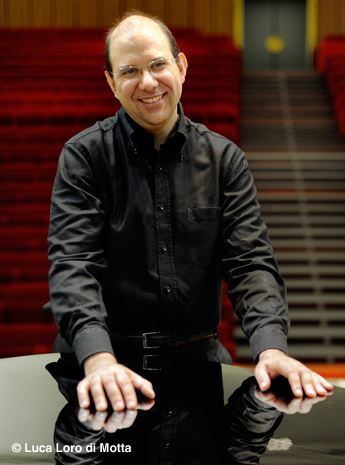 Aldo Orvieto studied at the Venice Conservatory. He owes much of his musical development to Aldo Ciccolini, with whom he recorded Busoni’s Fantasia contrappuntistica, released by Naxos in 2020 (8.574086). Orvieto has recorded programmes and concerts for the main European radio broadcasters, and has recorded more than 90 albums dedicated to 20th-century composers for labels such as ASV Records, cpo, Naxos and Nuova Fonit Cetra. Orvieto has performed as a soloist with numerous orchestras and ensembles, including the Orchestra Sinfonica Nazionale della RAI, Orchestra Della Toscana and Ensemble 2e2m, appearing at venues such as Teatro La Fenice in Venice, Arena di Verona and the Teatro Comunale di Bologna. He has appeared in concert and recorded with musicians such as Luigi Alberto Bianchi, Arturo Bonucci and Sara Mingardo, and has given many world première performances, in particular of works by Maderna, Clementi, Azio Corghi and Fabio Nieder. In 1979 Orvieto was one of the founders of the Ex Novo Ensemble. In 2019, he won the Italian Music Critics’ Abbiati Prize for an album of chamber works by Claudio Ambrosini. In 2020, together with cellist Luigi Piovano, he received the Isang Yun Prize (Unesco Creative City of Music Awards) for a recording dedicated to the Korean composer. Orvieto has published several musicological essays dedicated to the analysis of 20th-century piano repertoire and of German Lied (LIM and Armando Editore). He has written the piano entry for the soon-to-be-published Encyclopedia of Music (1900–2025) (Treccani).
Aldo Orvieto studied at the Venice Conservatory. He owes much of his musical development to Aldo Ciccolini, with whom he recorded Busoni’s Fantasia contrappuntistica, released by Naxos in 2020 (8.574086). Orvieto has recorded programmes and concerts for the main European radio broadcasters, and has recorded more than 90 albums dedicated to 20th-century composers for labels such as ASV Records, cpo, Naxos and Nuova Fonit Cetra. Orvieto has performed as a soloist with numerous orchestras and ensembles, including the Orchestra Sinfonica Nazionale della RAI, Orchestra Della Toscana and Ensemble 2e2m, appearing at venues such as Teatro La Fenice in Venice, Arena di Verona and the Teatro Comunale di Bologna. He has appeared in concert and recorded with musicians such as Luigi Alberto Bianchi, Arturo Bonucci and Sara Mingardo, and has given many world première performances, in particular of works by Maderna, Clementi, Azio Corghi and Fabio Nieder. In 1979 Orvieto was one of the founders of the Ex Novo Ensemble. In 2019, he won the Italian Music Critics’ Abbiati Prize for an album of chamber works by Claudio Ambrosini. In 2020, together with cellist Luigi Piovano, he received the Isang Yun Prize (Unesco Creative City of Music Awards) for a recording dedicated to the Korean composer. Orvieto has published several musicological essays dedicated to the analysis of 20th-century piano repertoire and of German Lied (LIM and Armando Editore). He has written the piano entry for the soon-to-be-published Encyclopedia of Music (1900–2025) (Treccani). The Composer(s)
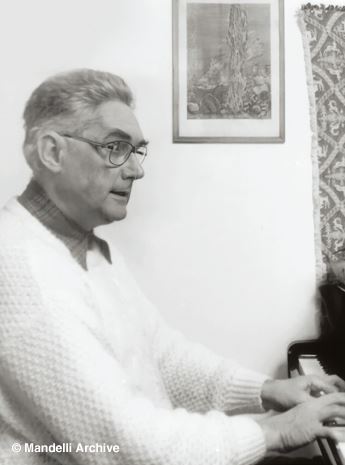 Niccolò Castiglioni was one of the most singular figures on the Italian music scene of the latter half of the 20th century. Including world première recordings, Volume 1 of this complete edition reveals the exceptional quality of Castiglioni’s early piano works, the cantabile solemnity found in his exploration of twelve-tone techniques, and the quest for simplicity in later pieces that include the Seconda sonatina discovered among the composer’s papers after his death. The acclaimed pianist Aldo Orvieto has recorded and performed extensively throughout his career and is a specialist in Italian 20th-century repertoire.
Niccolò Castiglioni was one of the most singular figures on the Italian music scene of the latter half of the 20th century. Including world première recordings, Volume 1 of this complete edition reveals the exceptional quality of Castiglioni’s early piano works, the cantabile solemnity found in his exploration of twelve-tone techniques, and the quest for simplicity in later pieces that include the Seconda sonatina discovered among the composer’s papers after his death. The acclaimed pianist Aldo Orvieto has recorded and performed extensively throughout his career and is a specialist in Italian 20th-century repertoire. Reviews
“Aldo Orvieto, who not only plays all these pieces but also produced the recording, definitely has the measure of Castiglioni’s unique universe and does this music proud.” – Classical Music Daily

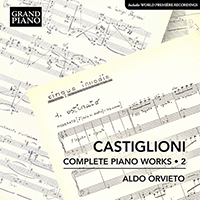
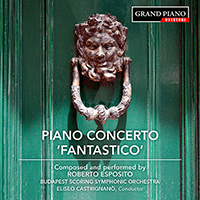
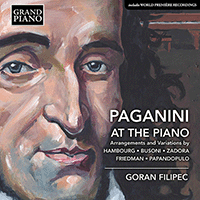
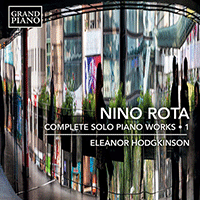
 Grand Piano has gained a reputation for producing high quality recordings of rare keyboard gems. Dedicated to the exploration of undiscovered piano repertoire, the label specialises in complete cycles of piano works by many lesser-known composers, whose output might otherwise have remained unknown and unrecorded.
Grand Piano has gained a reputation for producing high quality recordings of rare keyboard gems. Dedicated to the exploration of undiscovered piano repertoire, the label specialises in complete cycles of piano works by many lesser-known composers, whose output might otherwise have remained unknown and unrecorded.






